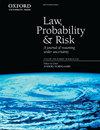坏钱
IF 2.7
4区 社会学
Q1 LAW
引用次数: 2
摘要
无论何时何地,金钱都是一种法律现象。在美国,绝大多数的货币供应是由商业银行和货币市场基金发行的货币负债——一种可按合同执行的承诺——构成的。这些私人金融机构受制于高度复杂的公共监管框架,其设计部分是为了提高这些承诺的可信度。因此,这些监管框架使银行和货币市场基金在发行货币负债方面具有巨大的相对优势,将原本存在风险的法律债权转化为所谓的“安全资产”——好钱。尽管有这种优势,但近年来,寻求发行货币负债的金融机构的数量和种类都出现了爆炸式增长。这种新型的金融机构包括像PayPal这样的点对点支付平台,以及像Facebook的Libra协会这样有抱负的稳定币发行人。这些新货币机构的显著特征是,它们寻求在传统银行和货币市场基金监管范围之外发行货币。本文首次全面考察了目前或即将治理这些新机构的各州监管框架的陈旧拼凑。研究发现,这些框架的特点是显著的异质性,往往不能有意义地提高这些机构对其货币负债持有人所作承诺的可信度。说白了就是:这些机构在发行劣币。因此,本文提出了一项国家货币法案,旨在加强和协调管理这些新机构的监管框架,促进更公平的竞争环境。本文章由计算机程序翻译,如有差异,请以英文原文为准。
Bad Money
Money is, always and everywhere, a legal phenomenon. In the United States, the vast majority of the money supply consists of monetary liabilities — contractually enforceable promises — issued by commercial banks and money market funds. These private financial institutions are subject to highly sophisticated public regulatory frameworks designed, in part, to enhance the credibility of these promises. These regulatory frameworks thus give banks and money market funds an enormous comparative advantage in the issuance of monetary liabilities, transforming otherwise risky legal claims into so-called “safe assets” — good money. Despite this advantage, recent years have witnessed an explosion in the number and variety of financial institutions seeking to issue monetary liabilities. This new breed of monetary institutions includes peer-to-peer payment platforms such as PayPal and aspiring stablecoin issuers such as Facebook’s Libra Association. The defining feature of these new monetary institutions is that they seek to issue money outside the perimeter of conventional bank and money market fund regulation. This paper represents the first comprehensive examination of the antiquated patchwork of state regulatory frameworks that currently, or might soon, govern these new institutions. It finds that these frameworks are characterized by significant heterogeneity and often fail to meaningfully enhance the credibility of the promises that these institutions make to the holders of their monetary liabilities. Put bluntly: these institutions are issuing bad money. This paper therefore proposes a National Money Act designed to strengthen and harmonize the regulatory frameworks governing these new institutions and promote a more level competitive playing field.
求助全文
通过发布文献求助,成功后即可免费获取论文全文。
去求助
来源期刊

Law Probability & Risk
MATHEMATICSSTATISTICS & PROBABILITY&-STATISTICS & PROBABILITY
CiteScore
2.10
自引率
28.60%
发文量
8
期刊介绍:
Law, Probability & Risk is a fully refereed journal which publishes papers dealing with topics on the interface of law and probabilistic reasoning. These are interpreted broadly to include aspects relevant to the interpretation of scientific evidence, the assessment of uncertainty and the assessment of risk. The readership includes academic lawyers, mathematicians, statisticians and social scientists with interests in quantitative reasoning.
The primary objective of the journal is to cover issues in law, which have a scientific element, with an emphasis on statistical and probabilistic issues and the assessment of risk.
Examples of topics which may be covered include communications law, computers and the law, environmental law, law and medicine, regulatory law for science and technology, identification problems (such as DNA but including other materials), sampling issues (drugs, computer pornography, fraud), offender profiling, credit scoring, risk assessment, the role of statistics and probability in drafting legislation, the assessment of competing theories of evidence (possibly with a view to forming an optimal combination of them). In addition, a whole new area is emerging in the application of computers to medicine and other safety-critical areas. New legislation is required to define the responsibility of computer experts who develop software for tackling these safety-critical problems.
 求助内容:
求助内容: 应助结果提醒方式:
应助结果提醒方式:


